If you're German, chances are you've got memories wrapped up in slices of warm, savory Leberkäse. If you're not German, you're probably wondering what this funny-looking "meatloaf" is doing in our bakeries, breakfast tables, and even on street food menus.
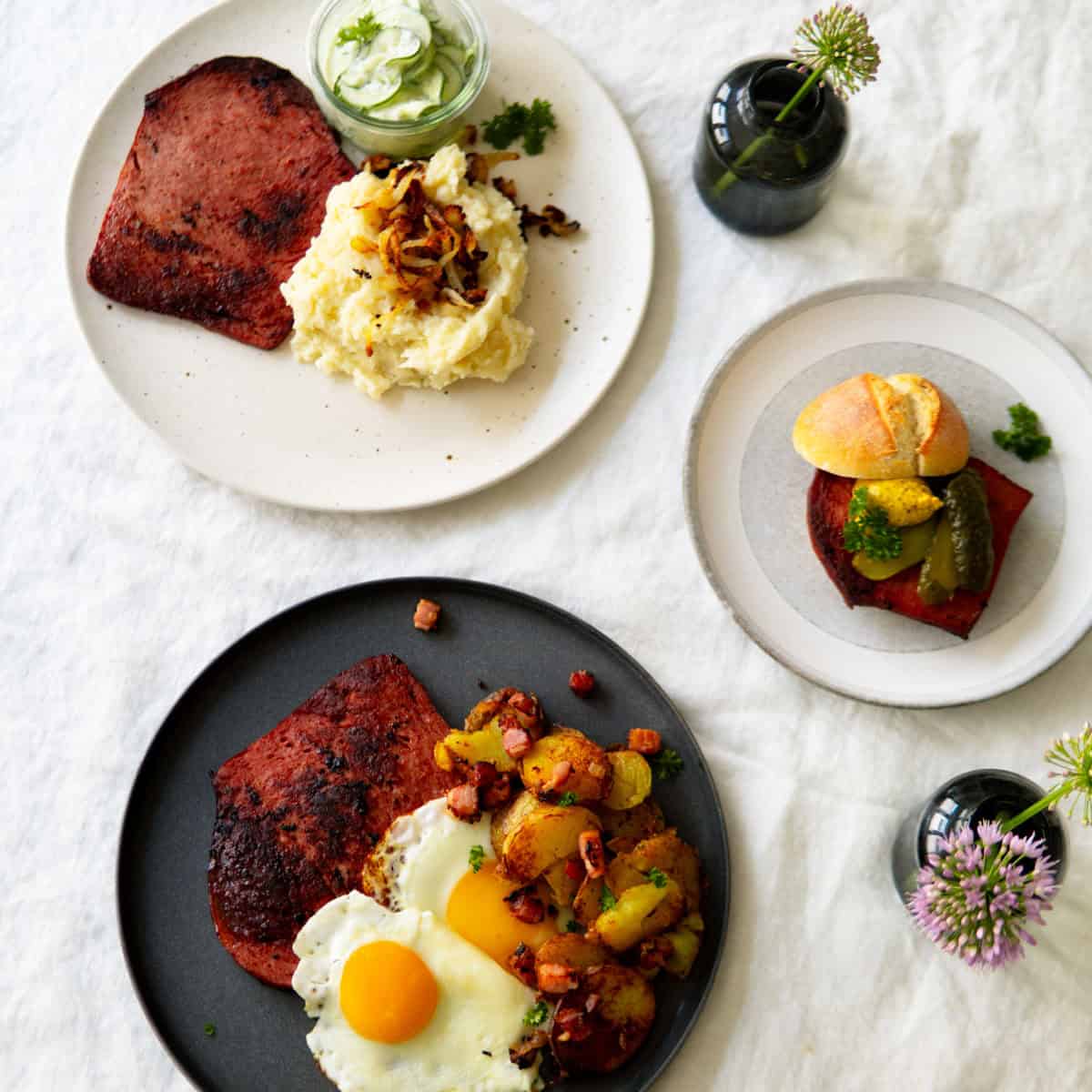
Let me tell you: Leberkäse may not win any beauty contests, but it sure is delicious! It's German comfort food in that uniquely German way!
Jump to:
What exactly Is leberkäse?
Leberkäse (pronounced LAY-ber-kay-zeh), also known in some parts of Germany as Fleischkäse (usually outside of Bavaria), is made from finely ground pork and beef that's seasoned and baked into a loaf until the top gets golden and slightly crisp. It literally translates to “liver-cheese,” even if there is no liver or cheese in most versions. It's smooth and tastes like bologna, but I promise the super tasty kind!
Besides Leberwurst, bologna is super popular to eat in Germany on bread for a German breakfast or Abendbrot (the bread-centered traditional dinner meal).
How to eat Leberkäse?
You can eat it hot or cold, thick or thin, on a plate or in a bun. And if you ask me, it’s one of the most underrated German foods around!
Today I’m sharing three of my favorite ways to enjoy Leberkäse, including the one my Oma used to make for dinner when we came over after school. I hope these ideas bring you a little taste of home or help you fall in love with a new-to-you German classic!
1. Oma's Way: Leberkäse with Fried Egg and Bratkartoffeln
This is how my Oma Sieghilde always served Leberkäse (and I personally think it's the best way): thick slices, pan-fried until golden, topped with a sunny-side-up egg with crispy edges, and served alongside buttery Bratkartoffeln (German fried potatoes with onions). It’s ultra cozy, super satisfying, and best enjoyed with a little dollop of mustard on the side.
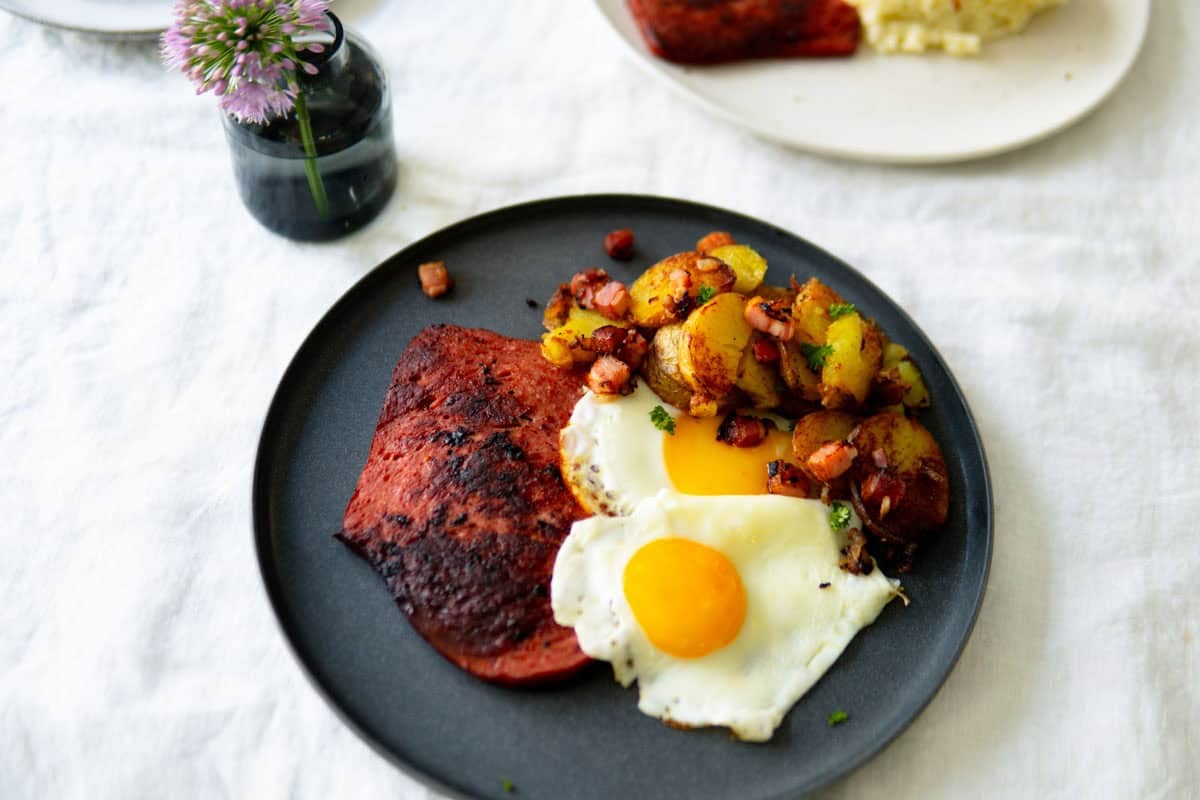
You can fry the Leberkäse slices in just a touch of butter until they’re golden on each side, about 3 minutes per side over medium heat. Add an egg to the same pan, and you’ve got dinner ready in 10 minutes!
Get the Bratkartoffeln recipe here
2. The Bavarian street food way: leberkässemmel
The Leberkässemmel is Bavaria’s answer to the meatloaf sandwich: simple, warm, and incredibly satisfying. Just a thick slice of hot Leberkäse tucked into a crusty German bun (called Weizenbrötchen) with a generous swipe of tangy mustard. That’s it.
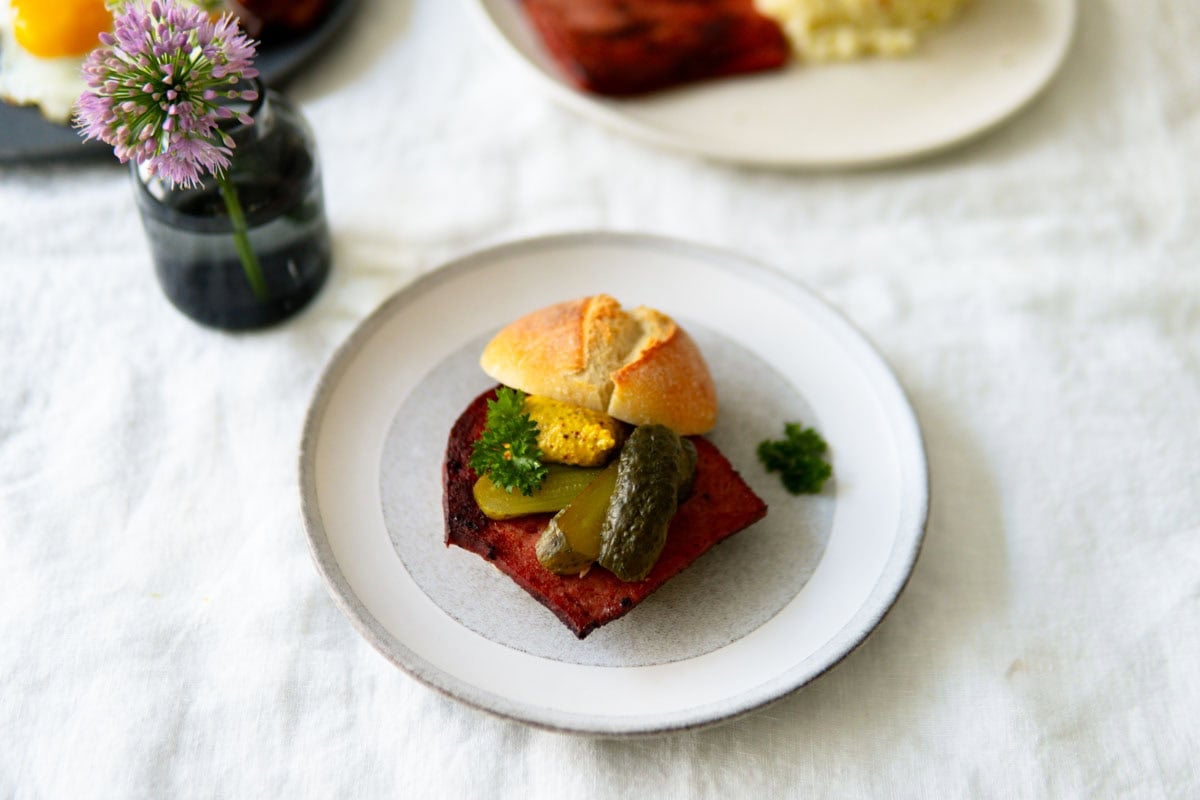
This is our go-to road trip snack when we're in Germany, and honestly, it’s perfect any time of day!
You could also thinly slice your Leberkäse and pile it onto your crusty bun (so good and this may be my preferred way!).Finally, optionally finish your sandwich with sliced German pickles, radishes and even sliced boiled eggs. Althoughkeeping it plain is perfectly cool too!
Try your hand at homemade Brötchen/Semmeln!
3. The classic way: leberkäse with mashed potatoes and caramelized onions
If you're in the mood for cozy comfort food, serve your Leberkäse with creamy mashed potatoes and a heaping spoonful of golden, crisp-fried caramelized onions. Bonus points for a drizzle of brown gravy if you're feeling extra indulgent. This one is perfect for Sunday dinner when the weather cools down and you want something rustic and warming.
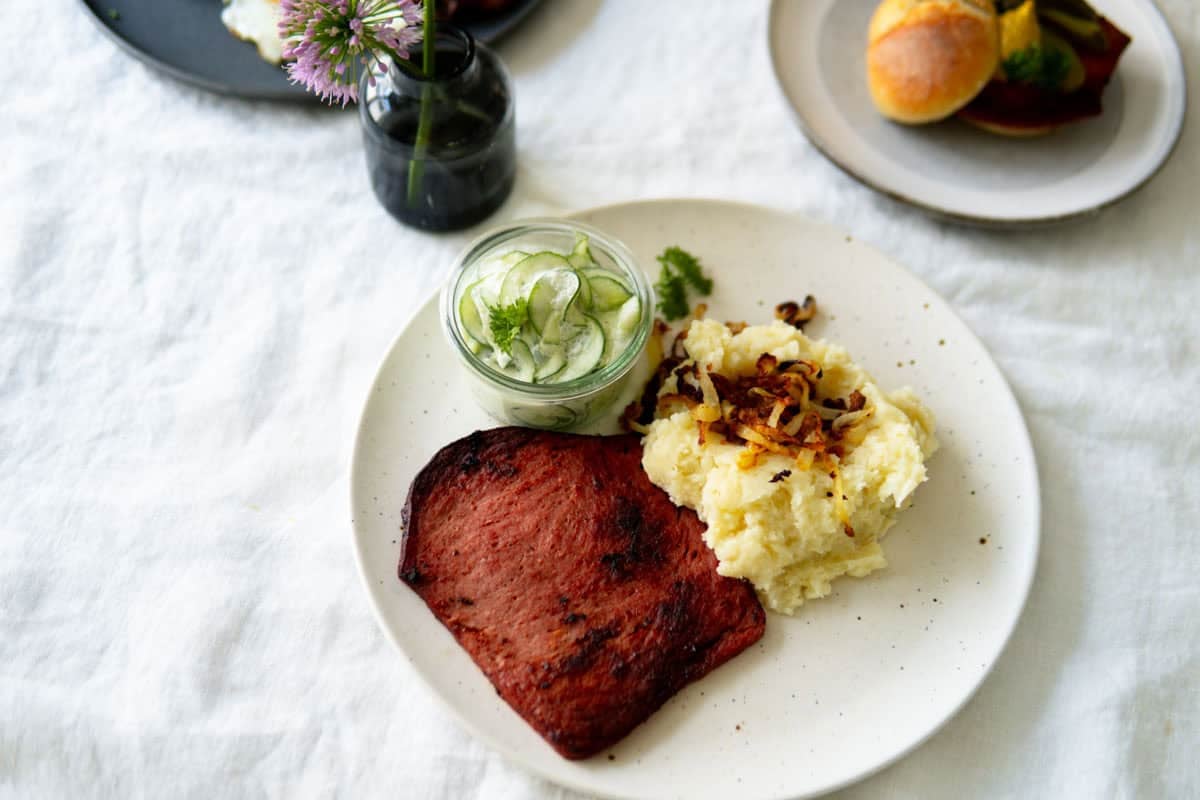
The caramelized onions are worth the time. They bring sweetness and crunchy depth that pair beautifully with the savory Leberkäse.
Get the crispy, caramelized onion recipe here. Just scroll to the onion step in my Käsespätzle recipe.
Where to find leberkäse in the U.S.
Look for it at German butcher shops, specialty delis, or frozen sections at European markets. If you're patient, you might uncover a local maker!
My favorite source for Leberkäse is my go-to favorite German-style butcher Schaller & Weber. You can get 10% off your order with code DIRNDL10.
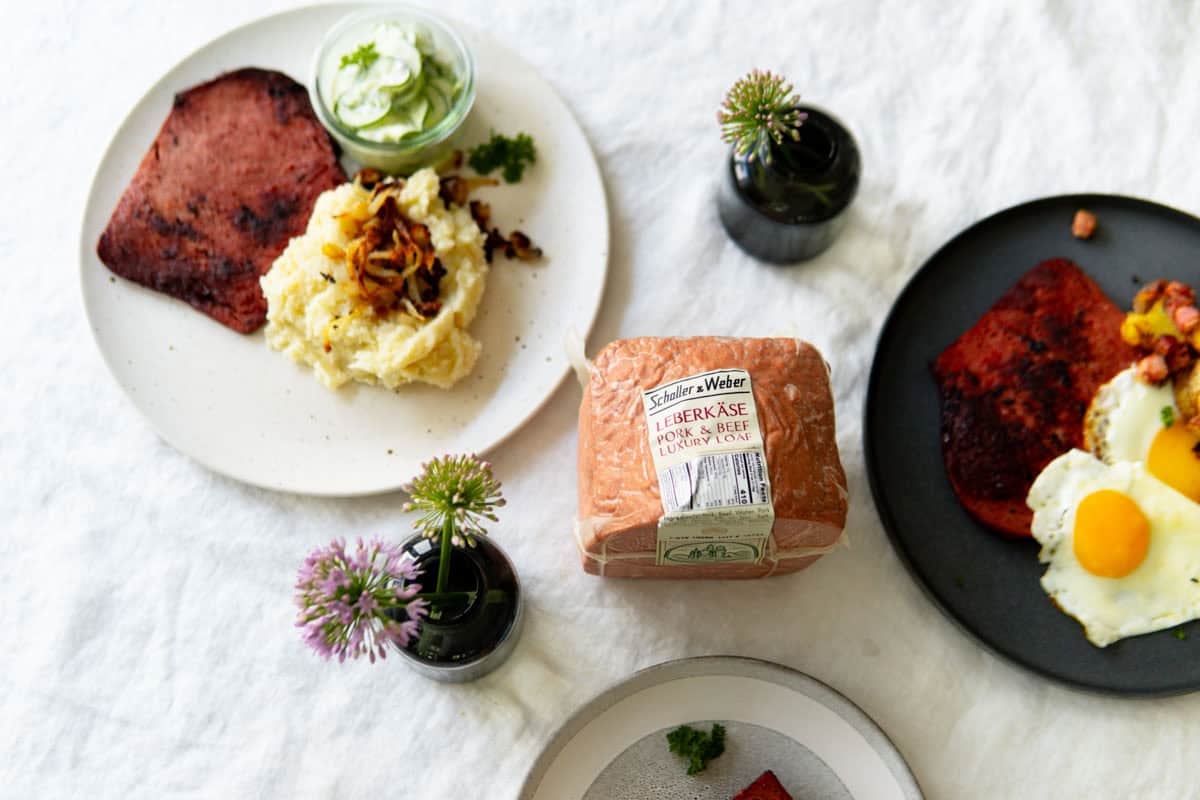
Slice and freeze in portions. Frozen slices can be pan-fried directly. Just add a bit of butter, heat slowly until you have those crispy edges and the internal temperature is 165 Fahrenheit (74 Celsius). I love this instant-read thermometer that I use for baking and cooking all the time!
A slice of history
Leberkäse was invented in southern Germany, particularly Bavaria, during the late 18th century. It was a practical way for butchers to use scraps, often baked to resemble French pâté loaves brought over from Mannheim by court butchers. Over time, it became its own thing and spread throughout Austria and Switzerland too.
The challenge with making it at home is with achieving that velvety emulsion. It requires a meat grinder or industrial cutter, strict temperature control (often with ice), and precise seasoning. Plus, German food laws even dictate liver content. Outside Bavaria, it must include some liver unless labeled differently. No wonder most folks in the U.S. leave this to skilled butchers like my favorite German-style butcher Schaller & Weber.
I wanna know: which is your favorite way to eat Leberkäse? Then subscribe to my free weekly newsletter for even more German food inspiration.

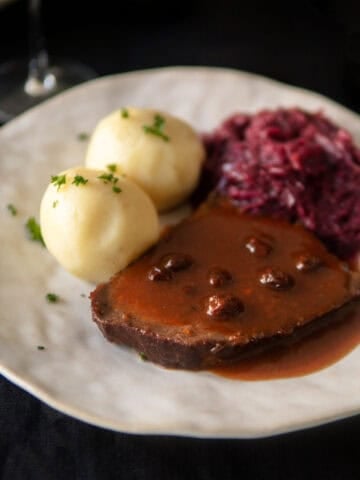

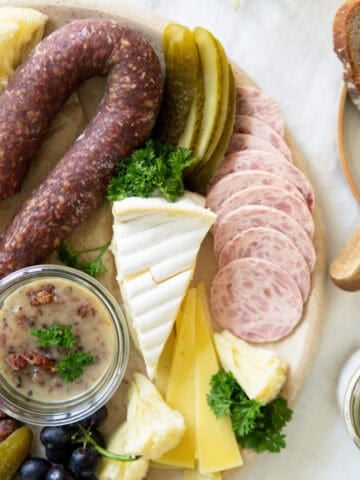
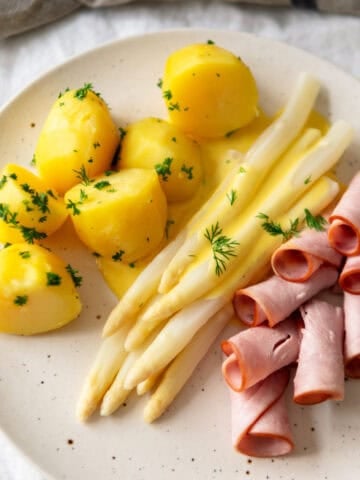
Leave a Reply